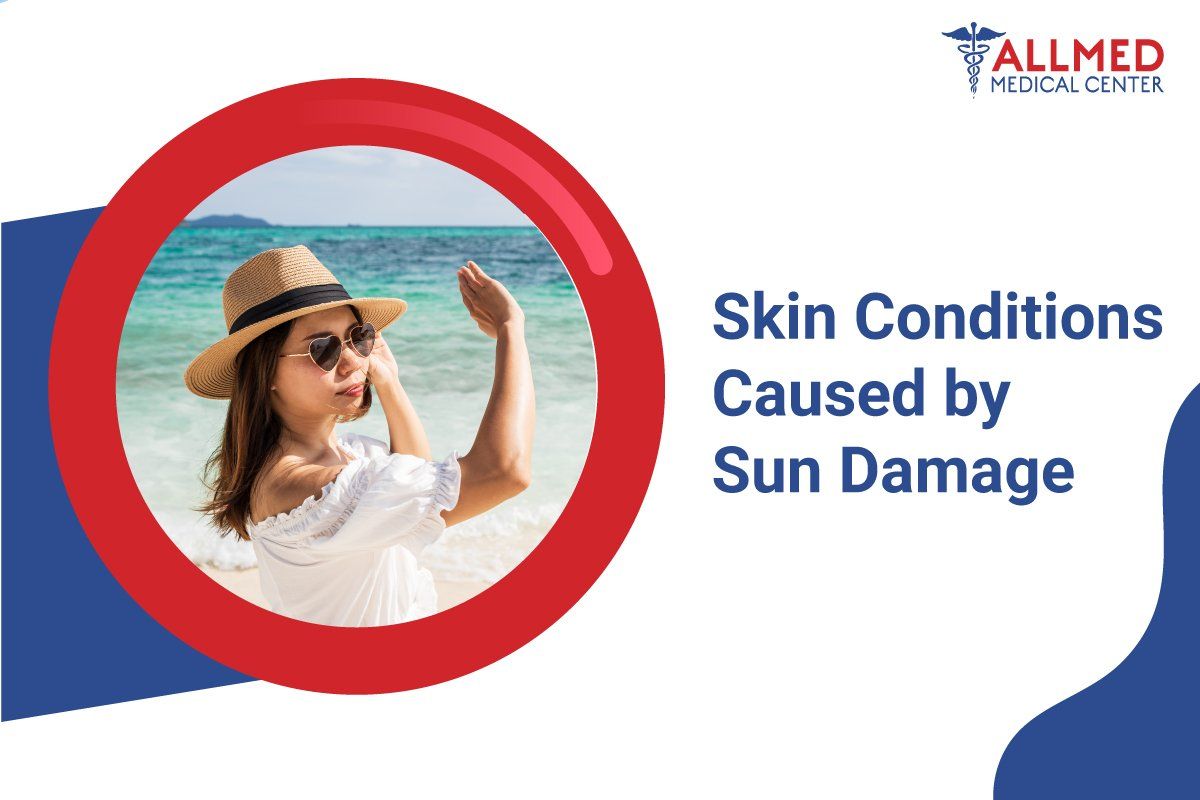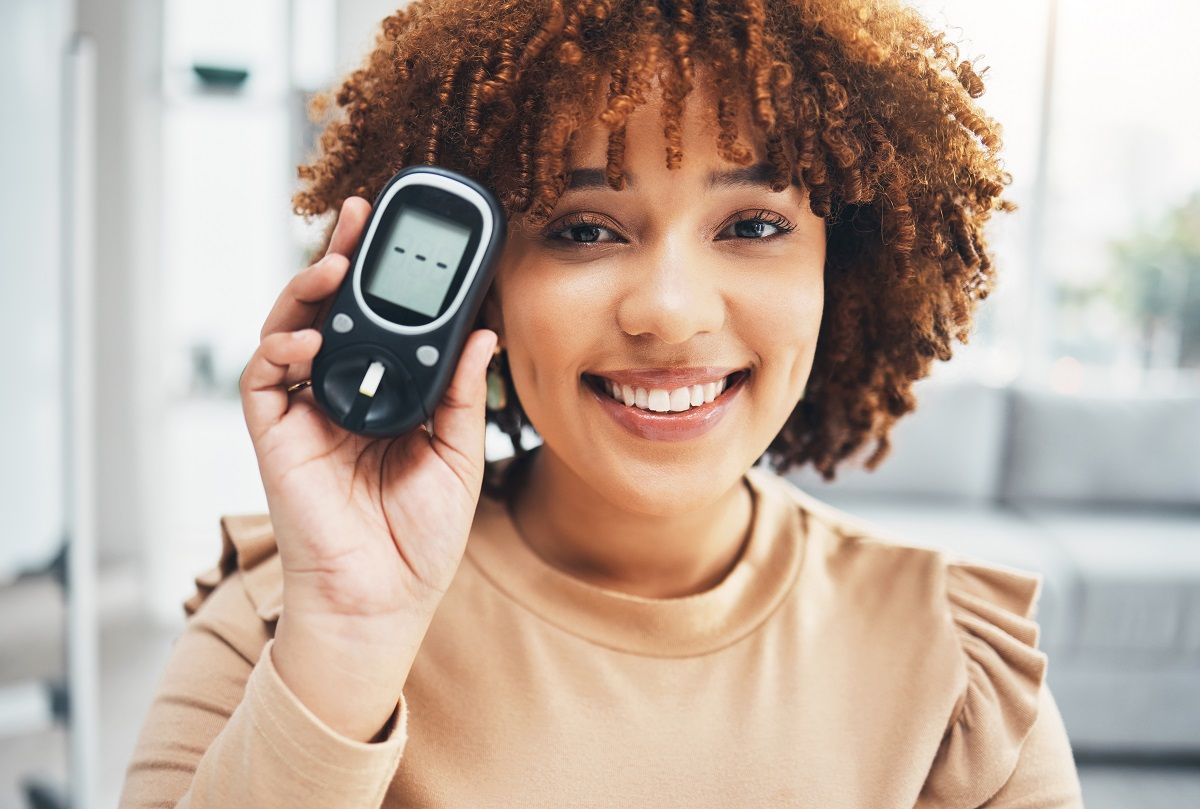Skin Conditions Caused by Sun Damage

Summertime fun is here. You're probably planning on going to the beach with your friends and family. However, it is also the time when scorching heat is at its peak. Unfortunately, too much sunlight exposure harms your health, especially your skin. To celebrate UV safety month, we've compiled the skin conditions that you may experience this summer.
In this article, we'll provide you with interesting facts about different types of
skin conditions caused by sun damage. We'll also discuss the best treatment methods and management tips. So, if you're ready to have fun this summer, let's dive in.
What is Ultraviolet Light or UV?
Sunlight is the primary source of ultraviolet light or UV. Studies say that 10% of sunlight is made up of ultraviolet rays. Although it comes from the sun, only one-third reaches the earth.
Sunlight is good for your health. It contains
vitamin D, which is good for bone health and the immune system. However, prolonged exposure can cause skin damage, including cancer. Here's a compilation of skin conditions caused by skin damage.
Solar Damage to Skin
Dry Skin
A common skin condition caused by sun damage is dry skin. It may sound harmless, but you should never take it lightly. Extended sunlight exposure causes the skin to lose essential oils and moisture. As a result, you may get itchy and flaky skin. Moreover, you could develop sunburn. In some cases, sunburn causes an itchy and burning sensation that is painful to the touch. Some individuals even experienced severe pain and fever that lasted for 2 days.
Treatment
The method to treat dry skin is to apply a moisturizer regularly. Using an ample amount of sunscreen before going to the beach helps too. In addition, the worst cases require immediate attention from a medical professional.
Age Spots
You can recognize age spots by their shape and color. They form and develop in the upper layer of the skin and look like large freckles. Age spots are usually tan, but some are brownish or darker. They appear in the hands, arms, shoulders, or face. Some age spots clump together and create a noticeable lump on the skin. Age spots are generally harmless but could affect your confidence due to their unlikely appearance on your skin. Sun damage to the skin can affect your physical appearance.
Treatment
Lightening cream usually does the trick in treating age spots. However, suppose you want a faster and more efficient solution. In that case, you may try other options, such as laser treatments, cryotherapy, or chemical peels. All these treatments are safe and effective.
Actinic Keratosis
When you have actinic keratosis, your skin will have scaly and rough patches that resemble a raised bump or a wart. It results in sun-damaged skin. These patches appear in multiple places in the body, like your face, neck, arms, hands, or scalp. Some people reported itching, while others didn't have the same experience. Studies say that 10% can potentially turn into skin cancer.
Treatment
The most common treatment of actinic keratosis is cryotherapy. This procedure uses extreme cold to freeze and remove the lumps caused by actinic keratosis. It is an efficient way of removing skin tissues without adverse side effects.
Solar Elastosis (Wrinkles)
Sunlight reduces the skin's elasticity. This occurs when your skin gets extensive exposure to direct sunlight. The tissues deteriorate prematurely, making them look older than they should be. The result is saggy and leathery-looking skin. Sun damage on the skin could make you less attractive.
Treatment
One of the quickest ways to manage wrinkles is fractional laser treatment. It evens skin pigmentation and reduces the effects of wrinkles. The procedure is called CO2RE laser resurfacing. The other treatments include using anti-aging skincare products. Some of the best examples are antioxidants, retinoids, heparan sulfate, and defensin.
Skin Cancer
The worst skin condition from sun damage is skin cancer. A lifetime of direct and prolonged UV exposure is the typical culprit. Studies say that ultraviolet rays are a proven human carcinogen. UV damages the DNA in your skin. As a result, it causes the skin to malfunction, potentially leading to skin cancer.
Treatment
There are several ways to treat skin cancer. Here are brief examples
Cryosurgery
This method works by freezing the cancer cells. The dead tissues shed when it thaws.
Surgery
The doctor uses this method to remove the affected part of your skin. Other cases require the removal of healthy tissues surrounding the cancerous area for efficiency and safety.
Radiation Therapy
This procedure is highly efficient when excisional surgery yields minimal results. Doctors use high-energy beams to eliminate cancer cells.
Chemotherapy
One of the best ways to prevent the spread of cancer is chemotherapy. Some cases only require topical solutions for cancers affecting only the skin's surface.
Biological Therapy
Boosting your immune system is an effective way to manage skin cancer. A robust immune system can help eliminate cancer cells and speed up recovery.
UV Rays Protection Tips
Here are helpful tips on how to protect your skin from the harmful rays of the sun
- Always apply sunscreen
- Avoid UV exposure at its peak
- Always find shade
- Wear tightly woven fabrics for better protection
- Wear a cap or a hat
- Don't forget your sunglasses
Enjoy Summer at Its Best
AllMed Medical Center offers various medical services for all health conditions. Our primary doctors specialize in treating skin conditions caused by sun damage. We aim to help you enjoy summer without risking your health. Feel free to book an appointment anytime by clicking this link.
AllMed Medical CentersServing
Greater Sacramento
Allmed Medical Center | All Rights Reserved.









